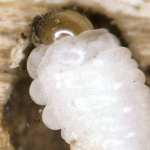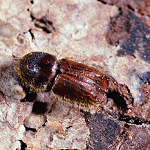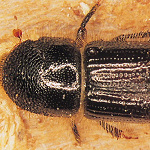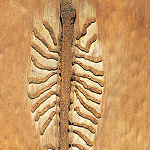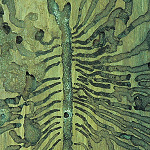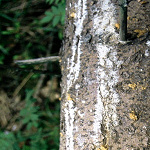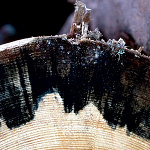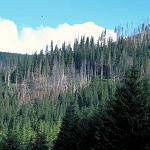 |
The Global Invasive Species Team |  |
|
Gallery of Pests:
Pests & pathogens that have not yet arrived or have been eradicated European spruce beetle - Ips typographus L. - Faith Campbell - - August 2004 - Photographs Click on the images below to view photographs. Complete photographic credits are given here.
European spruce beetle
The European spruce beetle is found across Europe and Asia (USDA APHIS & Forest Service, 2000), where it causes considerable damage. This beetle is one of the most commonly detected pests traveling on solid wood packing material, even after the adoption of the 1995 regulations intended to prevent introductions of bark-associated insects (USDA APHIS & Forest Service, 2000). Several times, the beetle has been found in dunnage or warehouses after inspections (Hofacker, 1993; LaGasa et al. 1997; USDA APHIS & Forest Service, 2000); fortunately, in these cases the pest was eradicated before it became established. The European spruce beetle carries various fungi, some of which can be extremely pathogenic. If introduced beetles were accompanied by a virulent fungus, and native beetles also spread the fungus, "[i]t could.be as disastrous to North American spruce as the Dutch elm disease was to elms" (USDA Forest Service, 1991). Sources Hofacker, T. H. 1993. United States Department of Agriculture, Forest Service Staff Entomologist. Memorandum of meeting on May 28, 1993. LaGasa, E., M. M. Furniss, and H. Kamping. 1997. Washington State Department of Agriculture Lab Services Division 1996 Entomology Project Report. March 13, 1997. United States Department of Agriculture Animal and Plant Health Inspection Service and Forest Service 2000. Pest Risk Assessment for Importation of Solid Wood Packing Materials into the United States. USDA APHIS and Forest Service. August 2000. United States Department of Agriculture Forest Service. 1991. Pest Risk Assessment of the Importation of Larch from Siberia and the Soviet Far East, Miscellaneous Publication No. 1495, September, 1991.
|
||||||||||||||||||
Updated January 2005 ©The Nature Conservancy, 2004 |
|||||||||||||||||||


